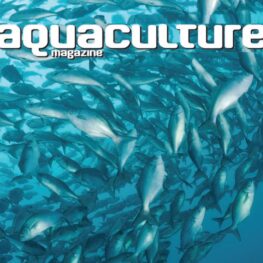Categories
Aquaculture Publications 2021Quillaja saponaria and/or Yucca schidigera ameliorate water quality, growth performance, blood health, intestine and gills histomorphology of Nile tilapia, Oreochromis niloticus
Ahmed M. Abozeid1, Mohamed M. Abdel-Rahim2, Fatma Abouelenien3, Asmaa Elkaradawy1, Radi A. Mohamed1
2 Aquaculture Division Fish Rearing Lab (NIOF)
Aquaculture Research, 2021, 52: 6117 – 6131
https://doi.org/10.1111/are.15474
(Indexed in Scopus)
Abstract:
This study aimed to evaluate the synergistic effects of Quillaja saponaria (QS) and Yucca schidigera (YS) on water quality, growth performance and health status of Nile tilapia. Fish (n = 120, 11.97 ± 0.497 g) were randomly distributed into four experimental groups in triplicates. (1) Control group (CG), fish received basal diet; (2) Yucca schidigera group (YS); fish received basal diet and 0.11 ml/m3 per week YS extract in water; (3) Quillaja saponaria group (QS), fish received basal diet supplemented with 300 mg/ kg QS extract; (4) Mixed group (QS/YS), fish received basal diet supplemented with 300 mg/kg QS and 0.11 ml/m3 per week YS extract in water. Results revealed an improvement of water quality parameters in QS/YS, YS and QS compared with CG (p ≤ 0.05). Fish received QS and/or YS showed higher growth performance and lower feed conversion ratio than CG (p ≤ 0.05), with the best findings being reported in QS/ YS. Using QS and/or YS improved gill health, increased intestinal villi length and goblet cell number compared with CG (p ≤ 0.05). Lymphocytes, total protein, globulin and lysozyme activity were increased, while cholesterol, triglycerides, glucose and creatinine were decreased in fish received QS and/or YS compared with CG (p ≤ 0.05), with the best results being observed in QS/YS. QS and/or YS supplementation increased lipase, amylase, superoxide dismutase, catalase while reduced malonaldehyde activity compared with CG, with the highest activity being recorded in QS/YS. Conclusively, Nile tilapia received QS and YS prompted synergistic effects that improved water quality, growth performance, immune-oxidative status, digestive enzymes, gills and intestine histomorphology.
Keywords: ammonia, blood health, feed efficiency, gills and intestinal histomorphology, Oreochromis niloticus, Quillaja saponaria, Yucca schidigera
Corresponding author e-mail: [email protected], Radi A. Mohamed






